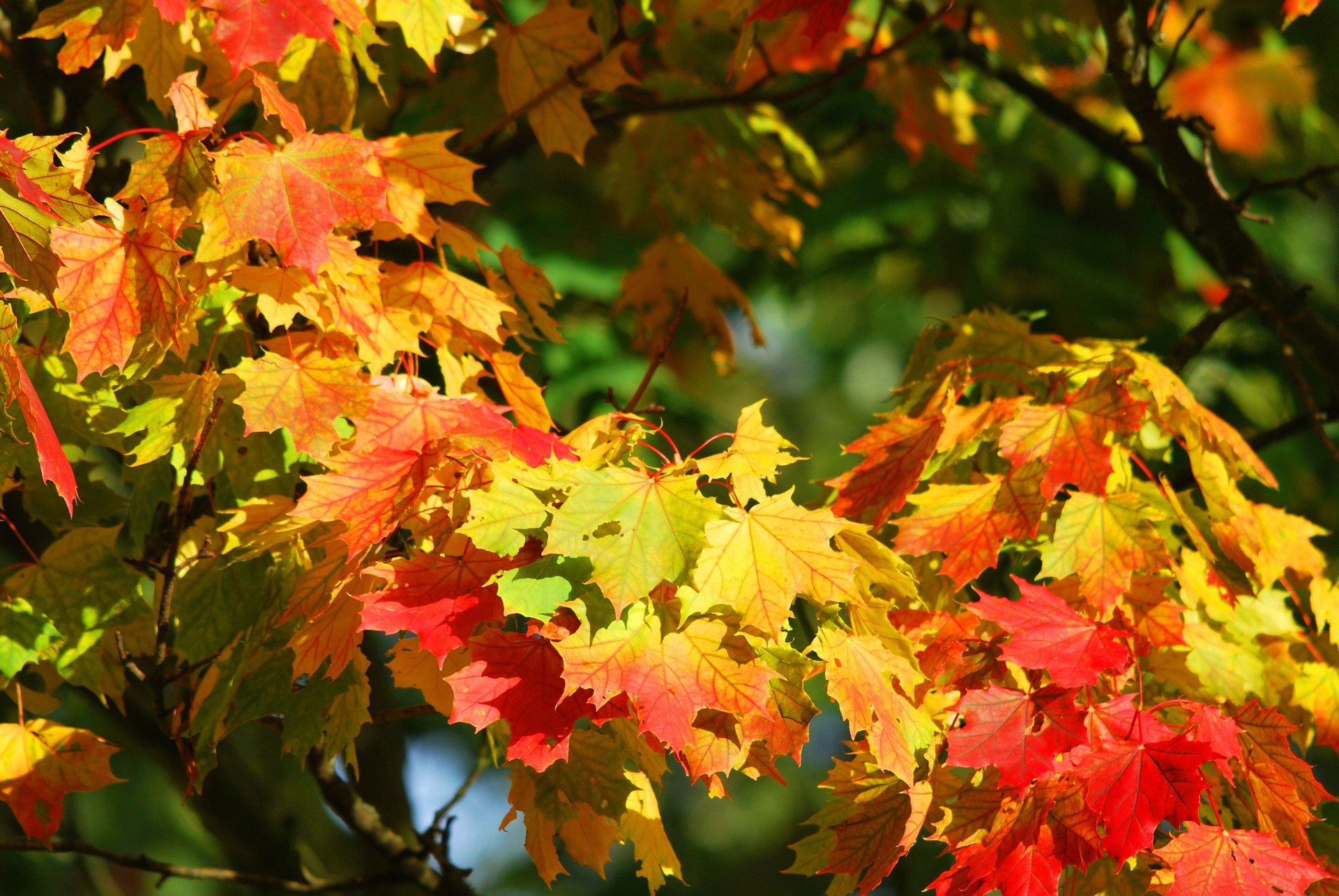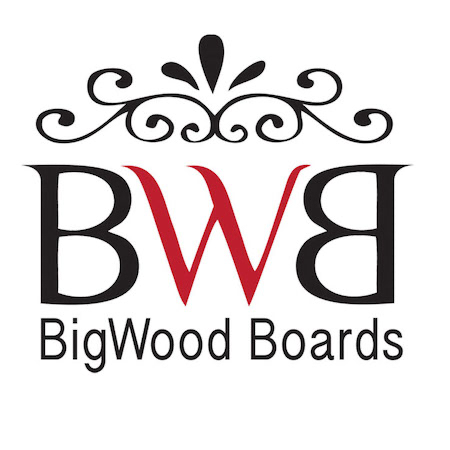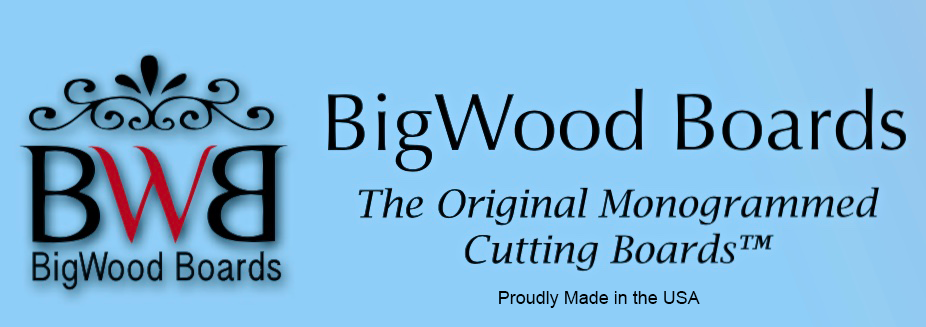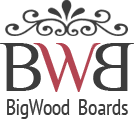Recent Posts
Maple or Walnut Wood? Which is Best?
Posted by on


BigWood Boards specializes in cutting boards, cheese boards, serving trays, appetizer boards, bottle openers, and more. The products are mainly made from only two kinds of wood: Maple and Walnut. If you have seen our product catalog or have perused our website, you know this product had come a long way from when our ancestors used a tree stump to cut their food up. One of the questions that you may have is which one of these two kinds of wood is best for what you want?
 What Are The Factors To Consider?
What Are The Factors To Consider?
Typically there are four things to consider when determining what wood is best for your needs for a cutting board or the other products that BigWood Boards produces. Foremost is hardness, which is measured by the Janka hardness rating that indicates how easily the surface can be scratched or dented. For the record, the hardest wood on the planet is Pockholz wood or the wood of life, and Cuipo wood is the softest in the world.
Secondly is the porosity or the size of microscopic pores that determine how much moisture and bacteria can enter the cutting surface. Neither of these is appealing when it comes to preparing or serving food, and boards with smaller pores are better.
Third comes the toxicity of the wood. Wood from trees that produce nuts tends to be less toxic and thus safe for food preparation or serving. While wood from trees that do not produce nuts or consumable products may be more attractive, they are not safe for food. Both of the woods used by BigWood Boards provide something safe for human consumption and thus are excellent for use.
Last is the conditioning. Wood can shrink, warp or split depending on the humidity around it, and it needs to be protected. Using a food-grade mineral oil like BigWood Board’s Block Oil to coat the board is all that needs to be done, but how often this needs to be done depends on the type of wood itself.
Maple
Maple makes for an excellent cutting surface. Regardless of whether it is soft or hard Maple wood, though hard Maple wood is the industry standard when it comes to cutting boards. Hard Maple wood is more scratch and impact-resistant than other woods, but it is also not so hard that it will dull your knife blades excessively.
Due to the small pores of Maple wood, it blocks bacteria, moisture, and stains better than other woods making food preparation safer for everyone involved. Speaking of stains, they can be one of the drawbacks when it comes to Maple in that the wood is lighter in color, which makes hiding stains much harder, so cleaning the board quickly after use is a must. A more neutral color means it can fit into nearly any kitchen. But Maple boards are also more susceptible to humidity and do require some conditioning about every two months.
Maple is one of the most common trees found in North America, and it is one of the most sustainable materials on the planet. There is a massive demand for Maple wood, especially for cutting boards and cheese boards. Still, the supply is in abundance and can be quickly replenished. By buying a Maple cutting board, you use a more environmentally friendly source.
Maple And Deforestation
Deforestation is a huge problem here in the US and around the world. Wood is one of the most basic materials needed in today’s society. This has resulted in the loss of massive swaths of the forest. It is cleared for use in commercial, farming, and industrial applications as well as to make room for urban and suburban expansion. The destruction of many animal habitats and forest clearing is part of the climate change of our planet. Around 900 million trees are cut down annually around the world or about 2.47 million trees per day.
The effects of deforestation are unsustainable, which is why campaigns have been launched to counter the impact. Instituting proper forest management techniques like the Department of Agriculture’s North American Maple Project, which began monitoring tree conditions and trends in many US states and Canada in the 1980s. At the time, Maple trees were in severe decline, but only three decades later, that trend has been reversed.
Maple trees can grow from trunk stock regrowth or from seedlings with little human effort needed. A Maple tree also takes 30 years to reach full maturity and can live to be over 300 years old. But it can be harvested much earlier than that and decades earlier than many other species of trees. This increases the supply and means that more trees can grow at the same time, thus creating a sustainable resource.
Walnut
Walnut is a softer wood than Maple. The benefit of this is that a knife will be much less likely to dull when using this wood, but there is a tradeoff since the softer wood is easier to scratch or dent. Its medium to large pores offer some resistance to bacteria and moisture but not as much as Maple. Due to its dark color, it is much easier to hide a stain, and this offers an extra bonus as it tends to complement more modern kitchen countertops.
Walnut wood has a beautiful texture and naturally dark tone. Virginia-grown Walnut wood is considered as the most beautiful wood available in the world. This wood also offers one significant benefit as it is self-healing. When cuts occur on the board, the grains separate and then close back on their own. Walnut is also susceptible to humidity, just like any other wood, but it requires protection to be applied less often.
So Which Is Best?
At BigWood Boards, we love all of the boards that we make, and we think that both are durable, beautiful woods to create our cutting boards and cheese boards. We use Maple and Walnut wood from New York and Virginia, so the wood came from the same general areas. Which one is best will depend on your preferences. The customer gets a high-quality product that is made entirely in the United States. The options of adding a custom monogram or design to their product to make it truly unique.
If you want a lighter colored board go with Maple, and if you want a darker board go with Walnut. Maple is a slightly higher quality wood with many benefits. Still, despite that, it is a less expensive end product though Walnut offers its own advantages. But in the end, it comes down to what you, the customer, wants. That’s why we have options for you at BigWood Boards.

Additional supporting links:
https://www.bobvila.com/articles/best-wood-for-cutting-board/
https://www.misen.co/blogs/news/best-wood-for-cutting-board


